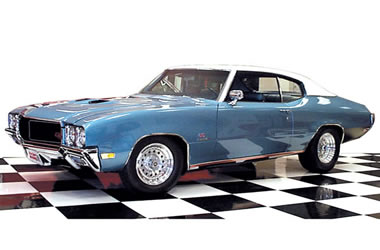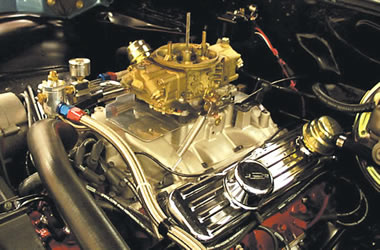Richard Lasseter made hot rod history way back in 1984 when his 1970 Buick Gran Sport Stage 1 automatic beat a Plymouth GTX Hemi four-speed in a shootout sponsored by Car Review magazine (now Muscle Car Review). When the tire smoke cleared, the Stage 1 455 had beat the Hemi with a best run of 12.30 at 110.97 miles-per-hour.
Fast-forward a bunch of years. Richard still owned the GS (affectionately known as Ol’ Blue), and was asked to participate in another shootout. This time, it was a contest between carburetors on the chassis dyno at Holley Performance Products.
The idea behind the carb shootout was simple. Baseline runs would be made with the car in “as-is” condition, followed up with runs using three different carburetors: the 1,000 cfm Holley HP the 455 came with. a Holley HP Series 950 cfm double pumper, and an 870 cfm Street Avenger with vacuum secondaries.
The Holley engineering team conducted the testing and installation chores. The results were averaged to determine the comparison numbers.
In a classic case of “bigger is not always better,” the Stage 1 455 made more power with the 950 HP double pumper than with its original 1,000 cfm HP carburetor. The relatively low-revving Stage 1 doesn’t require any more than 950 cfm to make horsepower.
It is important to point out that the tests were conducted with a full 2.5-inch dual exhaust system. If the GS had open headers or a larger set of pipes, the extra breathing capacity might have made the bigger carburetor a better choice.
Another factor affecting the results was the 10-inch torque converter. The dyno revealed it stalled between 3,400-3,500 rpm under load at full throttle—too loose for the combination. Because a loose converter tends to soak up horsepower and turn it into heat, the converter might have cost us 15 to 20 horsepower at the rear wheels. Another dyno session would tell us for sure. Maybe next time, huh?













Comments